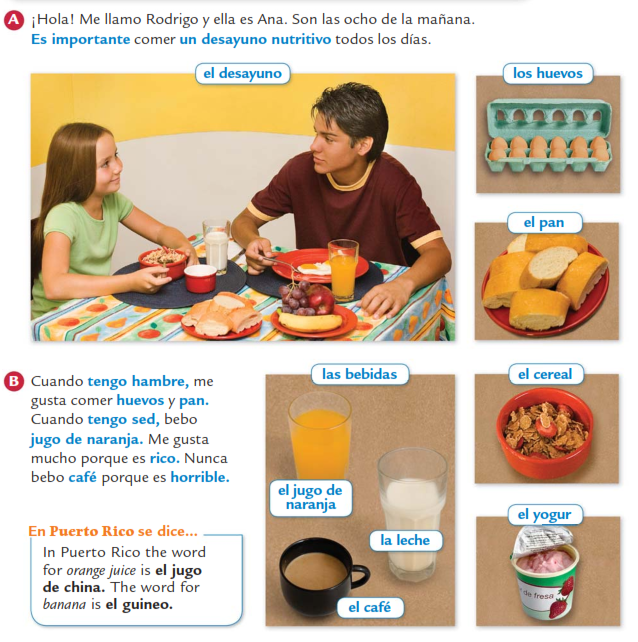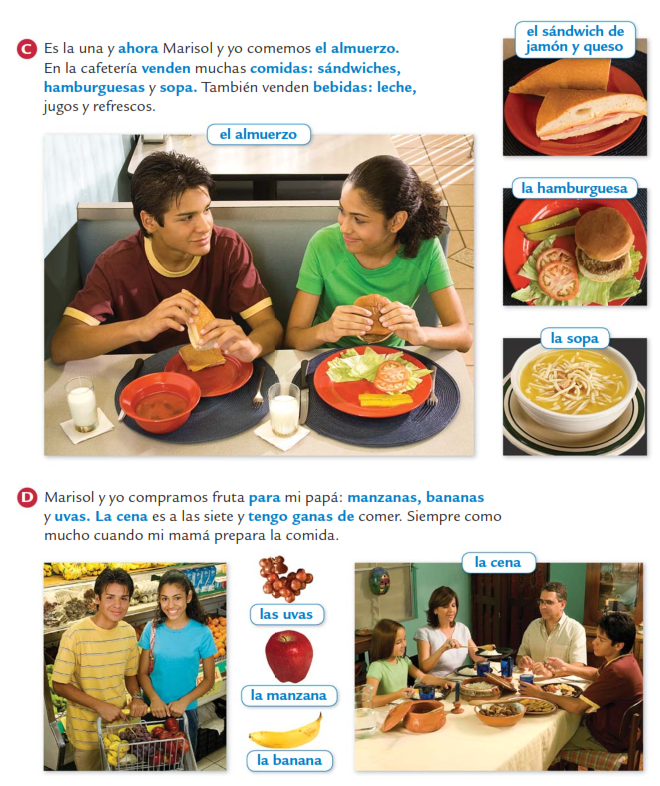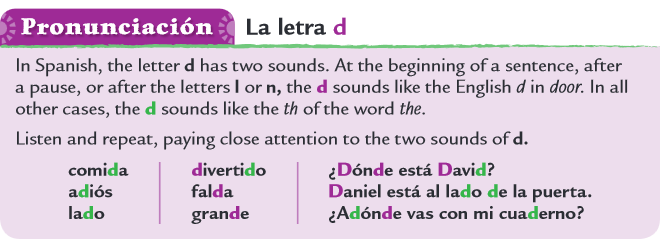Lesson 3-1 Vocabulary : Mi comida favorita
Lesson 3-1 Vocabulary: Mi comida favorita

Vocabulary: Mi comida favorita
In this lesson, you will learn to
- Talk about foods and beverages.
- Ask questions.
- Say which foods you like and don't like.
Using
- The verb hacer.
- Present tense of -er and -ir verbs.
- Interrogative words.
- Gustar with nouns.
In this lesson, you will learn about
- Traditional cooking.
- Puerto Rican artist Manuel Hernández Acevedo.
- Grocery shopping in Puerto Rico.
Course Content
Journal Activity
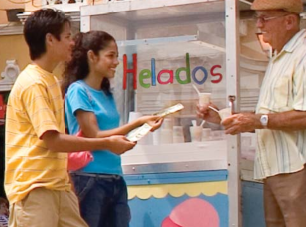
These teenagers are buying ice cream from a street vendor. Another popular cold treat in Puerto Rico is la piragua, shaved ice with fruit syrup. What do you like to eat or drink during hot weather?
eBook Pages
Lesson 1: Vocabulary
Proceed to Next Page
Presentación de VOCABULARIO (Vocabulary Presentation)

Interactives
Lesson Interactives
Interactive puzzles and games reinforce key concepts and provide additional practice.
Proceed to Next Page
Práctica de VOCABULARIO (Vocabulary Practice)

The following are Vocabulary activities. Complete the activities in your Class Journal.
Activity 1
Activity 2
Proceed to Next Page
VOCABULARIO en contexto (Vocabulary in Context)

Overview
Telehistoria escena 1
Goal: Listen to how Pablo and Claudia talk about when they will study. Then, practice these words to ask and tell time.
STRATEGIES
Cuando lees. List the question words. As you read, list the words that indicate questions, such as Qué in ¿Qué amiga? Save the list to add more question words as you encounter them.
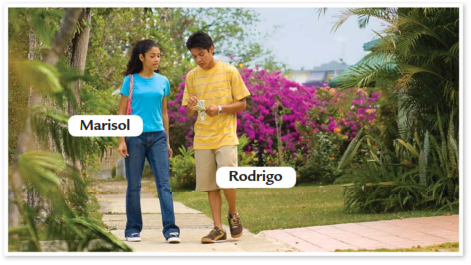
Rodrigo and Marisol walk to the grocery store. Rodrigo is counting his money.
Marisol: ¿A la escuela? ¿Por qué vas a la escuela hoy? Es sábado.
Rodrigo: Trini Salgado llega hoy y necesito un autógrafo en una camiseta. Es importante.
Marisol: ¿En una camiseta? ¿Qué camiseta?
Rodrigo: Tengo una amiga…
Marisol: (teasing him) ¿Una amiga? ¿Qué amiga? ¿Cómo se llama?
Rodrigo: Se llama Alicia.
Marisol: ¿De dónde es?
Rodrigo: Es de Miami. (He loses count and starts over, sighing.)
Marisol: ¿Cuándo tienes que estar en la escuela?
Rodrigo: A las cuatro de la tarde. (Rodrigo loses count.) ¡Y por favor! ¡No más preguntas! (He starts to count again.)
Marisol: Quince, veinte, cuarenta…
The following are Vocabulary activities. Complete the activities in your Class Journal.
IR Verbs

